|
Let your imagination listen to the great historical menagerie of presidential pets and you’ll hear the sounds of their feathered friends, like Thomas Jefferson’s mockingbirds, or Calvin Coolidge’s canaries and maybe his pet goose – OR parrots? George and Martha Washington had more than one. When President James Madison and his wife moved into the White House in 1809, so did Dolley Madison’s green and yellow macaw parrot. Dolley was known for her fashionable turbans and often, for Polly, the big bright, squawk-ative bird on her shoulder, helping to greet her guests. And how thrilling, when high-spirited Polly swooped about the high-ceilinged rooms and dive-bombed the company! Later, she was part of the scary War of 1812 drama, when, in 1814, red-coated British soldiers torched the White House. But at least Dolley made sure they didn’t get their hands on the precious painting of President Washington, or her precious Polly. Just months later, General Andrew Jackson led a rough, frontier army down the Mississippi River to drive the British out of New Orleans. Victorious Andy Jackson, national hero, ended up being President, from 1829 to 1837. That old soldier knew a lot of salty language and so did his pet parrot, Poll. We know this because in 1845, he attended ex-President Jackson’s funeral – at least until a shocked human carried poor Poll out of the room. Too much sad excitement had set him to squawking curse words! At the end of the 1800s, President William McKinley amused himself by teaching his yellow-headed Mexican parrot how to whistle “Yankee Doodle.” After Mr. McKinley died of an assassin’s bullet, in 1901, former Vice President Theodore Roosevelt took office. He and First Lady Edith Roosevelt and their six children had LOTS of pets, including a big, beautiful parrot named Eli Yale. Eli was a deep blue hyacinth macaw. There would be other presidential parrots. After all, the big worldwide parrot family has 350 species. Parakeets, for instance: John F. Kennedy’s little girl had two of them. Lyndon B. Johnson’s family kept lovebirds, little candy-colored parrots. But more than a century has passed since a big, big-beaked macaw like Polly or Poll has lived in the White House. Deep blue Eli Yale was the last - so far. Andrew Jackson owned an African grey parrot. Wikimedia Cockatiels, cockatoos, and large flightless kakapos are just a few of the many kinds of parrots. One of the biggest is the gentle, South American hyacinth macaw – from head to tail, more than three feet long! Wikimedia Teddy Roosevelt with Eli Yale. Wikimedia MLA 8 Citation
Harness, Cheryl. "Polly Wants a President." Nonfiction Minute, iNK Think Tank, 13 Mar. 2018, www.nonfictionminute.org/the-nonfiction-minute/ polly-wants-a-president.
2 Comments
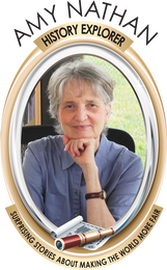 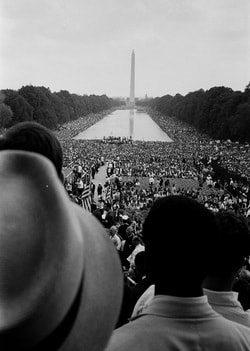 The view from the Lincoln Memorial on August 28, 1963, during the March on Washington for Jobs and Freedom. Credit: Courtesy Library of Congress The view from the Lincoln Memorial on August 28, 1963, during the March on Washington for Jobs and Freedom. Credit: Courtesy Library of Congress On August 28, 1963, the Reverend Dr. Martin Luther King, Jr., stood on the steps of the Lincoln Memorial in Washington, D.C., and looked out at a sea of faces reaching as far as the eye could see. More than 200,000 people had gathered there to take part in one of the largest protest rallies in United States history: the March on Washington for Jobs and Freedom. Standing there that day, Dr. King delivered a stirring speech: his “I Have a Dream” speech. It’s a speech that has been voted the best political speech given in the United States during the 20th century, according to a group of 137 experts on speechmaking who were asked to pick the century’s 100 top speeches. In this speech, Dr. King called for an end to segregation and discrimination, which had led to so many people being treated unfairly just because of the color of their skin. He spoke of his dream that one day the nation would live up to the idea set forth in its Declaration of Independence—that “all men are created equal.” He spoke also of his dream that one day black children and white children would treat each other as sisters and brothers. Today, visitors to the Lincoln Memorial in Washington can stand on the very spot where Dr. King stood more than fifty years ago to deliver his famous speech. The location is marked by these words that have been chiseled into a stone landing about eighteen steps down from the top: I HAVE A DREAM MARTIN LUTHER KING, JR. THE MARCH ON WASHINGTON FOR JOBS AND FREEDOM AUGUST 28, 1963 Carving these words into the stone step came about because of a tourist from Kentucky who visited the Lincoln Memorial in 1997 and wondered why there wasn’t a sign to let people know where Dr. King had stood. This visitor wrote to his representative in Congress, who agreed that marking the spot was a good idea and had Congress passed a law to allow that to happen. To figure out exactly where Dr. King stood, officials at the National Park Service, which manages the Lincoln Memorial, carefully studied photos and video that had been taken during the speech. Then, in 2003, they arranged for a local stone cutter to carve the words into the step where they decided Dr. King had stood. You have to look closely to find those words in the stone. They’re not highlighted in a bright color. But when you find them, you can stand up on that step and look out as Dr. King did, and try to imagine how he must have felt as he shared his hopes and dreams for his country with that huge crowd.. Click here for Dr. King’s “I Have a Dream Speech.” Click here for article Sources. 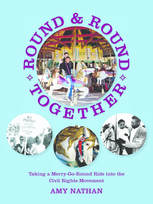 Amy Nathan is the author of Round and Round Together: Taking a Merry-Go-Round into the Civil Rights Movement, which tells of another civil rights milestone that took place on August 28, 1963—the day Dr. King gave his famous speech. That same day, about forty miles away from the Lincoln Memorial, a once-segregated amusement park at last dropped segregation, and a very young girl took a very special ride on a merry-go-round. MLA 8 Citation
Nathan, Amy. "Standing with Doctor King." Nonfiction Minute, iNK Think Tank, 12 01 2018, www.nonfictionminute.org/the-nonfiction-minute/ Standing-With-Doctor-King. 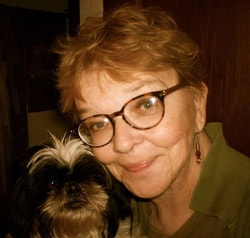 The United States, in the 1880s, had become an industrial power in the world, but factory workers could hardly feed their families. Miners spent long days down in the dangerous dark, digging a wealth of coal out of the earth, yet they were dirt-poor. Farm families were going broke too. They barely had the money to pay rich bankers the interest on loans they took out to buy seeds or to pay what the railroad charged to ship the crops that hadn’t dried up in a drought or got gobbled by hungry grasshoppers. Many a broke homesteader went back east. Lettered on the covers of their wagons: “IN GOD WE TRUSTED. IN KANSAS WE BUSTED!” Mary E. Lease, a Pennsylvania schoolteacher, went to Kansas, but she stayed there. And she was among the multitudes, who wondered why so many Americans were so poor in a country that was so rich? Where was the money going? Judging from what she read in the papers and heard down at the general store, the money seemed to be in the pockets of men who owned the mines, factories, railroads, and banks. And rather than pay people decent wages, they seemed to be paying politicians to make laws to help them stay rich and get richer. Sound familiar? In the early 1890s, folks got together and formed their own “People’s (or Populist) Party.” What did they want? Fairness, more government regulations, less silver, and more printed paper money. It wouldn’t be worth as much; but at least there’d be more of it to go around! And right in the middle of this uprising was fiery Mrs. Lease. At rallies around the Midwest, the South, even at the Chicago World’s Fair in 1893, Mrs. Lease whipped up the crowds, crying out, “We are for humanity against the corporations – for perishing flesh and blood against the money bags!” People called her a “Patrick Henry in petticoats,” after the great Revolutionary War speechmaker. “Wall Street owns the country. When I get through with the silk-hatted easterners, they will know that the Kansas prairies are on fire!” Oh, they knew it all right, for a while anyway. While it raged, this political tornado blew nine Populists into Congress. But the people’s movement fizzled out in the early 1900s. At least old Mrs. Lease lived to see some populist dreams come true. In the early 1930s, when so many Americans hit bottom, Franklin D. Roosevelt became President. Under FDR’s “New Deal” policies, the people got help from their very own government and the Wall Street banks and businesses were reined for a considerable time. Ah, but they’ve regained much of their former power and Mary E. Lease lies restless in her grave. 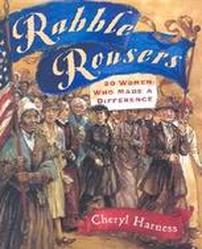 The perfect browsing volume for Women's History Month, Cheryl Harness's Rabble Rousers offers short, spirited profiles of twenty women who, like Mary E. Lease, impacted life in America by speaking out against injustice and fighting for social improvements. The folksy, friendly narrative introduces such fascinating figures as Sojourner Truth, abolitionist preacher; Dr. Mary Edwards Walker, a Civil War physician; Margaret Sanger, birth control pioneer; and Doris Haddock, a ninety-two-year-old champion of campaign-finance reform. The book spans over two hundred years of American history and includes time lines for such important social movements as abolition, woman suffrage, labor, and civil rights. Readers inspired by these fiery women can use the civil action tips and resources in the back of the book to do some of their own rabble-rousing. For more information, click here. ________________________________________ MLA 8 Citation
Harness, Cheryl. "Mary E. Lease: Queen of the Populist Tornado." Nonfiction Minute, iNK Think Tank, 12 Apr. 2018, www.nonfictionminute.org/the-nonfiction-minute/ mary-e-lease-queen-of-the-populist-tornado. 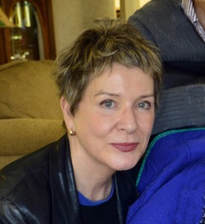 Who would build the world’s tallest building – the powerful Bank of Manhattan Trust Company down on Wall Street or Walter P. Chrysler, the automobile tycoon up on 42nd Street? It was early 1929, and a race for the sky raged in New York City. In late summer, the newspapers reported that the bank soared to 973 feet, just two feet higher than planned for the Chrysler Building. To the king of cars this was intolerable, so he turned to his architect, William Van Alen, who decided to outfox the competition. Five months later, people in New York were treated to an extraordinary sight. In 90 minutes, a splendid tower, topped by a silvery spire, with triangular windows, emerged from the building’s open roof. Secretly assembled in the fire shaft, it rose to a height of 1,046 feet, making the Chrysler Building the world’s tallest building. Van Alen had given Chrysler a structure that not only scraped the sky, he also, most imaginatively, used details of cars as decorations. Near the top of the building perched eight eagle-headed gargoyles, based on the hood ornament of a 1929 Chrysler Plymouth. Thirty-six stories above the street, there’s a wrap-around frieze of stylized cars featuring real metal hubcaps and four giant radiator caps. For a few months, until the Empire State Building took over as the world’s tallest building, Chrysler relished his number one status. His lavish apartment was near the top, and he boasted to friends and foes alike that he had the highest toilet in the city. So there he sat, on his porcelain throne, delighting in his elevated position. Chrysler and Van Alen expected rave reviews when the building was completed, but that didn’t happen. “The height of commercial swank,” sneered The New York Times. “Stunt design, with no serious significance,” sniffed The New Yorker, and another newspaper accused the spire of having the “appearance of an uplifted swordfish.” But things change. Now some 75 years later, the Chrysler Building is many people’s favorite skyscraper, and recognized as an outstanding example of Art Deco, the style of the twenties and thirties. Above all, there’s that incomparable swordfish-nose spire. It was Van Alen’s aim to have the triangular windows lit up at night. And now, long after his death, they do, launching the Chrysler Building into the Manhattan sky with all the fantasy and glitter of the Jazz Age. 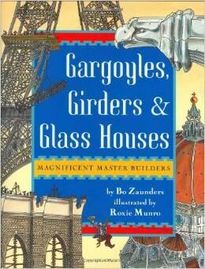 Roxie Munro is not only an author, but she is also an illustrator. She did the art for Gargoyles, Girders & Glass Houses by Bo Zaunders, a superb picture book tribute to seven of history's most celebrated architectural wonder-workers; It takes readers from the domes of Florence to the mosques of Turkey, from the Eiffel Tower to the Chrysler Building. Stunning illustrations and lively text evoke the passion and genius of builders whose inspiring work spans five centuries and six countries. For more information, click here. MLA 8 Citation
Munro, Roxie. "The Race for the Sky." Nonfiction Minute, iNK Think Tank, 5 Dec. 2017, www.nonfictionminute.org/ The-Race-For-The-Sky. Charles Loring Brace, a young Presbyterian minister with a big heart, was deeply distressed at the plight of the tens of thousands of abandoned children who roamed the streets of New York City in the early 1850s. Brace saw them everywhere. To stay alive, they had to beg and steal. In even the coldest weather, they had to sleep outdoors. Some of the street children were orphans. Others had been turned out by parents too poor to feed them. Or they had become lost in the vast city, or had run away because of abuse. Many were the children of immigrants and had no other family in this country. Brace was determined to do something. He raised money and started the Children’s Aid Society (CAS) to assist homeless children. While he started several beneficial programs for them, mostly he wanted to find them families—ones that would nurture, protect, and love them. Small town and farm folks would be best, he reasoned. He felt they were goodhearted and would be touched by the children’s plight and want to help. The child they took would help with chores and field work, just as all children did at that time. Could such a plan work? He decided to find out. So began what was soon known as the orphan trains. CAS assumed guardianship of orphans and children whose families couldn’t—or wouldn’t—care for them. Many lived in CAS facilities for months, growing strong and ready for travel. Then, in groups averaging 25 to 50, the children boarded trains dressed in new clothing, hair neatly trimmed, and bibles in hand. Posters went up in small towns along the tracks, announcing when the children would arrive. When they did, they were lined up, looked over, and matched with interested families. Whenever possible, CAS agents traveling with the children placed siblings together or near each other. They also tried to follow up on every placement, moving children to new homes if there were problems. Between 1854 and 1930, a quarter-million children made this journey in search of families to call their own. Sometimes they were taken only to be laborers or were never truly loved or accepted. But for most it worked well, and for some it worked splendidly. Said one rider who found a happy home at the end of the ride, “My life began when I got off that train.”
|
*NEWS
|
For Vicki Cobb's BLOG (nonfiction book reviews, info on education, more), click here: Vicki's Blog
The NCSS-CBC Notable Social Studies Committee is pleased to inform you
that 30 People Who Changed the World has been selected for Notable Social Studies Trade Books for Young People 2018, a cooperative project of the National Council for the Social Studies (NCSS) & the Children’s Book Council
Categories
All
Abolitionists
Adams Janus
Adaptation
Adaptations
Adkins Jan
Advertising
Aerodynamics
Africa
African American History
African Americans
Africa West
Agriculture
Aircraft
Air Pilots
Air Pressure
Air Travel
Albee Sarah
Alchemy
Alligators
Allusion
American History
American Icons
Amphibians
Amundsen Roald
Anatomy
Ancient
Ancient Cultures
Anderson Marian 1897-1993
Animal Behavior
Animal Experimentation
Animal Intelligence
Animals
Animation
Antarctica
Ants
Apache Indians
Apes
April Fool's Day
Architecture
Argument
Arithmetic
Art
Art Deco
Artists
Arts
Asia
Astronauts
Astronomy
Athletes
Atomic Theory
Audubon Societies
Authors
Autobiography
Automobiles
Aviation
Awards
Bacteria
Baseball
Battuta Ibn
Bears
Beatles
Beavers
Bees
Biodegradation
Biography
Biology
Biomes
Biomimicry
Biplanes
Birds
Black Death
Black History
Blindness
Blizzards
Bombs
Bonaparte Napoleon
Boone Daniel
Botany
Brazil
Bridges
Brill Marlene Targ
Brooklyn Bridge
Brown John
Buffaloes
Building Materials
Butterflies
Caesar
Caesar Julius
Caissons
Calculus
Calendars
Cannibal
Capitals
Caravaggio
Carbon Dioxide
Carnivores
Carson Mary Kay
Cartoons & Comics
Carving (Decorative Arts)
Cascade Range
Castaldo Nancy
Castles
Castrovilla Selene
Cathedrals
Cats
Caves
Celts
Cemeteries
Chemistry
Children's Authors
Child Welfare
China
Choctaw Indians
Christmas
Chronometers
Cicadas
Cinco De Mayo
Ciphers
Circle
Citizenship
Civil Rights
Civil Rights Movements
Civil War
Civil War - US
Climate
Climate Change
Clocks And Watches
Clouds
Cobb Vicki
COBOL (Computer Language)
Code And Cipher Stories
Collard III Sneed B.
Collectors And Collecting
Color
Commerce
Communication
Competition
Compilers
Composers
Computers
Congressional Gold Medal
Consitution
Contests
Contraltos
Coolidge Calvin
Cooling
Corms
Corn
Counterfeiters
Covid-19
Crocodiles
Cryptography
Culture
Darwin Charles
Declaration Of Independence
Decomposition
Decompression Sickness
Deep-sea Animals
Deer
De Medici Catherine
Design
Detectives
Dickens Charles
Disasters
Discrimination
Diseases
Disney Walt
DNA
Dogs
Dollar
Dolphins
Douglass Frederick 1818-1895
Droughts
Dr. Suess
Dunphy Madeleine
Ear
Earth
Earthquakes
Ecology
Economics
Ecosystem
Edison Thomas A
Education
Egypt
Eiffel-gustave-18321923
Eiffel-tower
Einstein-albert
Elephants
Elk
Emancipationproclamation
Endangered Species
Endangered-species
Energy
Engineering
England
Englishlanguage-arts
Entomology
Environmental-protection
Environmental-science
Equinox
Erie-canal
Etymology
Europe
European-history
Evolution
Experiments
Explorers
Explosions
Exports
Extinction
Extinction-biology
Eye
Fairs
Fawkes-guy
Federalgovernment
Film
Fires
Fishes
Flight
Floods
Flowers
Flute
Food
Food-chains
Foodpreservation
Foodsupply
Food-supply
Football
Forceandenergy
Force-and-energy
Forensicscienceandmedicine
Forensic Science And Medicine
Fossils
Foundlings
France
Francoprussian-war
Freedom
Freedomofspeech
French-revolution
Friction
Frogs
Frontier
Frontier-and-pioneer-life
Frozenfoods
Fugitiveslaves
Fultonrobert
Galapagos-islands
Galleys
Gametheory
Gaudi-antoni-18521926
Gender
Generals
Genes
Genetics
Geography
Geology
Geometry
Geysers
Ghosts
Giraffe
Glaciers
Glaucoma
Gliders-aeronautics
Global-warming
Gods-goddesses
Gold-mines-and-mining
Government
Grant-ulysses-s
Grasshoppers
Gravity
Great-britain
Great-depression
Greece
Greek-letters
Greenberg Jan
Hair
Halloween
Handel-george-frederic
Harness Cheryl
Harrison-john-16931776
Health-wellness
Hearing
Hearing-aids
Hearst-william-randolph
Henry-iv-king-of-england
Herbivores
Hip Hop
History
History-19th-century
History-france
History-world
Hitler-adolph
Hoaxes
Holidays
Hollihan Kerrie Logan
Homestead-law
Hopper-grace
Horses
Hot Air Balloons
Hot-air-balloons
Housing
Huguenots
Human Body
Hurricanes
Ice
Icebergs
Illustration
Imagery
Imhotep
Imperialism
Indian-code-talkers
Indonesia
Industrialization
Industrial-revolution
Inquisition
Insects
Insulation
Intelligence
Interstatecommerce
Interviewing
Inventions
Inventors
Irrational-numbers
Irrigation
Islands
Jacksonandrew
Jazz
Jeffersonthomas
Jefferson-thomas
Jemisonmae
Jenkins-steve
Jet-stream
Johnsonlyndonb
Jokes
Journalism
Keeling-charles-d
Kennedyjohnf
Kenya
Kidnapping
Kingmartinlutherjr19291968
Kingmartinlutherjr19291968d6528702d6
Kings-and-rulers
Kings Queens
Kings-queens
Koala
Labor
Labor Policy
Lafayette Marie Joseph Paul Yves Roch Gilbert Du Motier Marquis De 17571834
Landscapes
Languages-and-culture
Law-enforcement
Layfayette
Levers
Levinson Cynthia
Lewis And Clark Expedition (1804-1806)
Lewis Edmonia
Liberty
Lift (Aerodynamics)
Light
Lindbergh Charles
Liszt Franz
Literary Devices
Literature
Lizards
Longitude
Louis XIV King Of France
Lumber
Lunar Calendar
Lynching
Macaws
Madison-dolley
Madison-james
Madison-james
Mammals
Maneta-norman
Maneta-norman
Marathon-greece
Marine-biology
Marine-biology
Marines
Marsupials
Martial-arts
Marx-trish
Mass
Massachusetts-maritime-academy
Mass-media
Mastodons
Mathematics
May-day
Mcclafferty-carla-killough
Mcclafferty-carla-killough
Mckinley-william
Measurement
Mechanics
Media-literacy
Media-literacy
Medicine
Memoir
Memorial-day
Metaphor
Meteorology
Mexico
Mickey-mouse
Microscopy
Middle-west
Migration
Military
Miners
Mississippi
Molasses
Monarchy
Monsters
Montgomery
Montgomery-bus-boycott-19551956
Montgomery-heather-l
Monuments
Moon
Moran-thomas
Morsecode
Morsesamuel
Moss-marissa
Moss-marissa
Motion
Motion-pictures
Mummies
Munro-roxie
Munro-roxie
Musclestrength
Museums
Music
Muslims
Mythologygreek
Nanofibers
Nanotechnology
Nathan-amy
Nathan-amy
Nationalfootballleague
Nationalparksandreserves
Nativeamericans
Native-americans
Native-americans
Naturalhistory
Naturalists
Nature
Nauticalcharts
Nauticalinstruments
Navajoindians
Navigation
Navy
Ncaafootball
Nervoussystem
Newdeal19331939
Newman-aline
Newman-aline
Newton-isaac
New-york-city
Nobelprizewinners
Nomads
Nonfictionnarrative
Nutrition
Nylon
Nymphs-insects
Oaths Of Office
Occupations
Ocean
Ocean-liners
Olympics
Omnivores
Optics
Origami
Origin
Orphans
Ottomanempire
Painters
Painting
Paleontology
Pandemic
Paper-airplanes
Parksrosa19132005
Parrots
Passiveresistance
Patent Dorothy Hinshaw
Peerreview
Penguins
Persistence
Personalnarrative
Personification
Pets
Photography
Physics
Pi
Pigeons
Pilots
Pinkertonallan
Pirates
Plague
Plains
Plainsindians
Planets
Plantbreeding
Plants
Plastics
Poaching
Poetry
Poisons
Poland
Police
Political-parties
Pollen
Pollution
Polo-marco
Populism
Portraits
Predation
Predators
Presidentialmedaloffreedom
Presidents
Prey
Prey-predators
Prey-predators
Prime-meridian
Pringle Laurence
Prohibition
Proteins
Protestandsocialmovements
Protestants
Protestsongs
Punishment
Pyramids
Questioning
Radio
Railroad
Rainforests
Rappaport-doreen
Ratio
Reading
Realism
Recipes
Recycling
Refrigerators
Reich-susanna
Religion
Renaissance
Reproduction
Reptiles
Reservoirs
Rheumatoidarthritis
Rhythm-and-blues-music
Rice
Rivers
Roaringtwenties
Roosevelteleanor
Rooseveltfranklind
Roosevelt-franklin-d
Roosevelt-theodore
Running
Russia
Safety
Sanitation
Schwartz David M
Science
Scientificmethod
Scientists
Scottrobert
Sculpture
Sculpturegardens
Sea-level
Seals
Seals-animals
Secretariesofstate
Secretservice
Seeds
Segregation
Segregationineducation
Sensessensation
September11terroristattacks2001
Seuss
Sextant
Shackletonernest
Shawneeindians
Ships
Shortstories
Silkworms
Simple-machines
Singers
Siy Alexandra
Slavery
Smuggling
Snakes
Socialchange
Social-change
Socialjustice
Social-justice
Socialstudies
Social-studies
Social-studies
Sodhouses
Solarsystem
Sound
Southeast-asia
Soybean
Space Travelers
Spain
Speech
Speed
Spiders
Spies
Spiritualssongs
Sports
Sports-history
Sports-science
Spring
Squirrels
Statue-of-liberty
STEM
Storms
Strategy
Sugar
Sumatra
Summer
Superbowl
Surgery
Survival
Swanson-jennifer
Swinburne Stephen R.
Synthetic-drugs
Taiwan
Tardigrada
Tasmania
Tasmanian Devil
Tasmanian-devil
Technology
Tecumsehshawneechief
Telegraph-wireless
Temperature
Tennis
Terrorism
Thomas Peggy
Thompson Laurie Ann
Time
Titanic
Tombs
Tortoises
Towle Sarah
Transcontinental-flights
Transportation
Travel
Trees
Trung Sisters Rebellion
Tundra
Turnips
Turtles
Typhoons
Underground Railroad
Us-environmental-protection-agency
Us History
Us-history
Ushistoryrevolution
Us History Revolution
Us-history-war-of-1812
Us Presidents
Ussupremecourtlandmarkcases
Vacations
Vaccines
Vangoghvincent
Vegetables
Venom
Vietnam
Viruses
Visual-literacy
Volcanoes
Voting-rghts
War
Warne-kate
Warren Andrea
Washington-dc
Washington George
Water
Water-currents
Wax-figures
Weapons
Weather
Weatherford Carole Boston
Whiting Jim
Wildfires
Winds
Windsor-castle
Wolves
Woman In History
Women
Women Airforce Service Pilots
Women-airforce-service-pilots
Womeninhistory
Women In History
Women-in-science
Women's History
Womens-roles-through-history
Wonder
Woodson-carter-godwin-18751950
World-war-i
World War Ii
World-war-ii
Wright Brothers
Writing
Writing-skills
Wwi
Xrays
Yellowstone-national-park
Zaunders Bo
ArchivesMarch 2021
February 2021
January 2021
December 2020
November 2020
October 2020
September 2020
June 2020
May 2020
April 2020
March 2020
February 2020
January 2020
December 2019
October 2019
September 2019
August 2019
July 2019
May 2019
April 2019
March 2019
February 2019
January 2019
December 2018
November 2018
September 2018
June 2018
May 2018
April 2018
March 2018
February 2018
January 2018
December 2017
November 2017
October 2017
September 2017
March 2017
The NONFICTION MINUTE, Authors on Call, and. the iNK Books & Media Store are divisions of iNK THINK TANK INC.
a 501 (c) (3) nonprofit corporation. To return to the iNK Think Tank landing page click the icon or the link below. :
http://inkthinktank.org/
For more information or support, contact thoughts@inkthinktank.org
For Privacy Policy, go to
Privacy Policy
© COPYRIGHT the Nonfiction Minute 2020.
ALL RIGHTS RESERVED.
This site uses cookies to personalize your experience, analyze site usage, and offer tailored promotions. www.youronlinechoices.eu
Remind me later
Archives
March 2023
February 2023
January 2023
December 2022
November 2022
October 2022
September 2022
June 2022
May 2022
April 2022
March 2022
February 2022
January 2022
December 2021
November 2021
September 2021
April 2021
March 2021
February 2021
November 2020
October 2020
September 2020
June 2020
May 2020
April 2020
March 2020
February 2020
January 2020
October 2019
August 2019
July 2019
May 2019
April 2019
December 2018
September 2018
June 2018
May 2018
March 2018
February 2018
January 2018
December 2017
November 2017
October 2017
September 2017

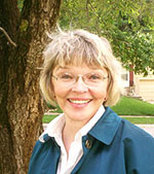
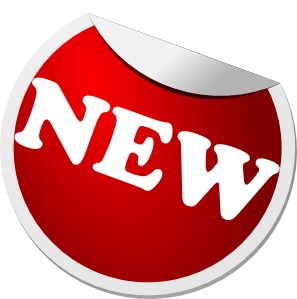

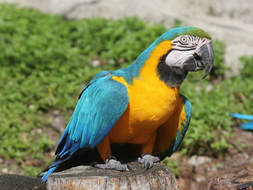
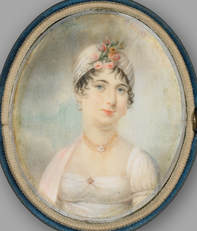
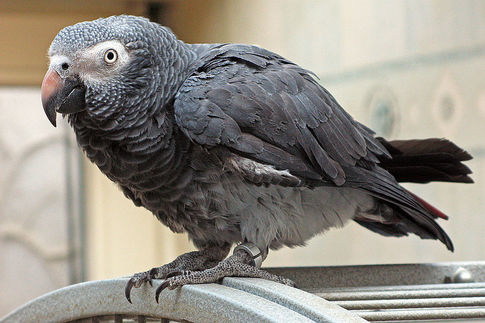
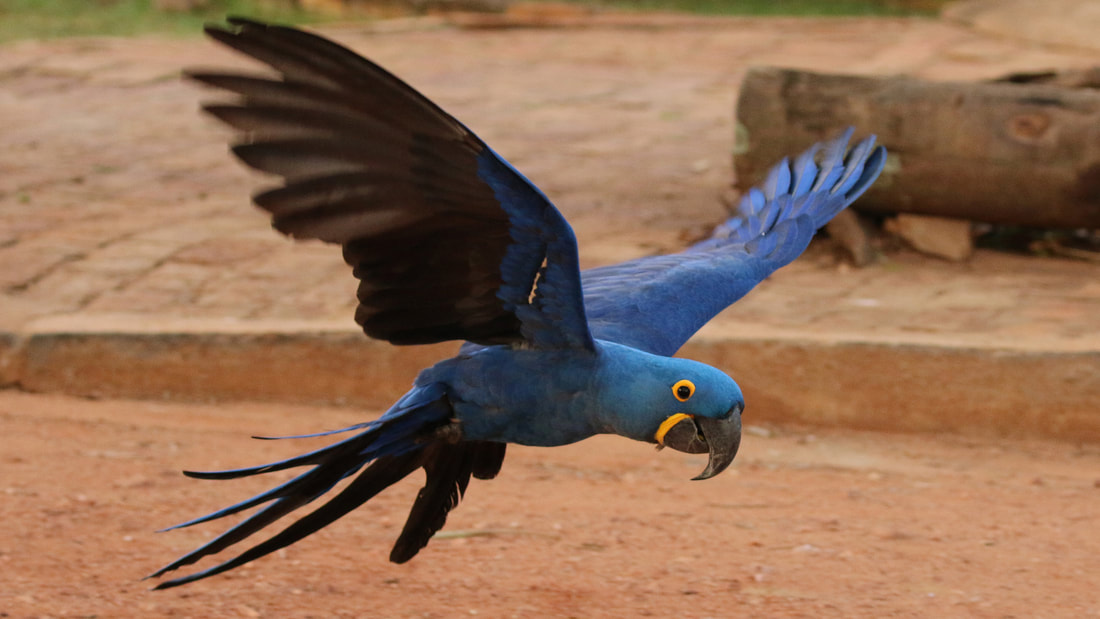
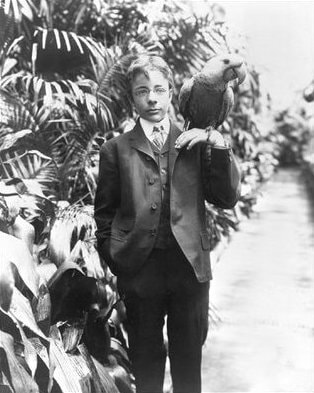


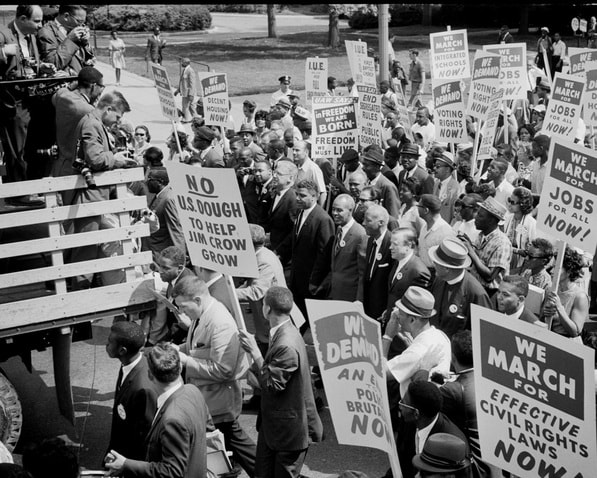
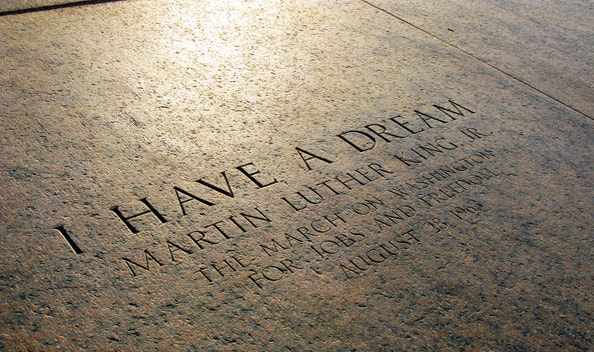


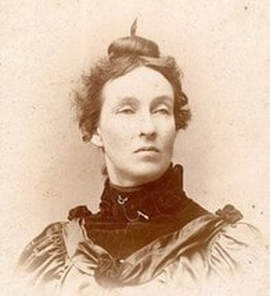
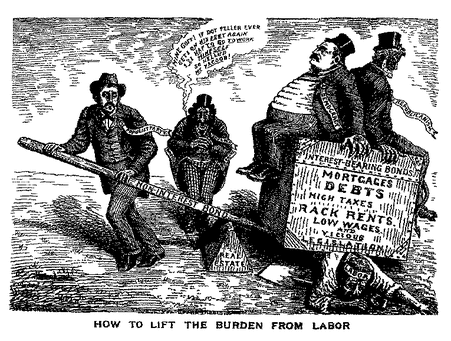


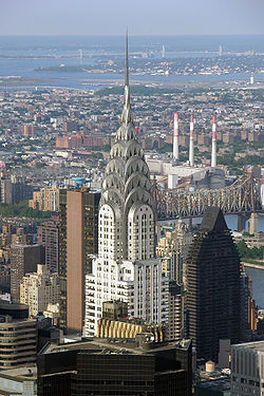
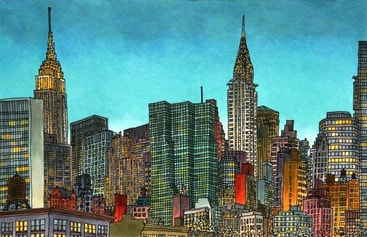
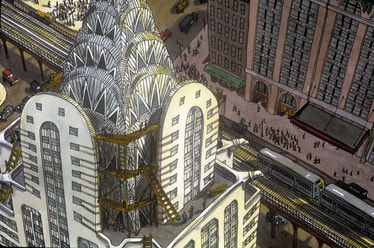
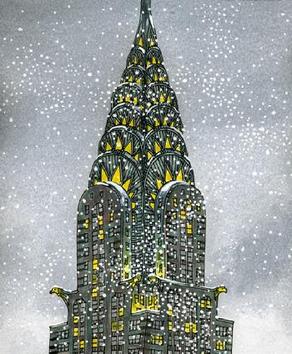
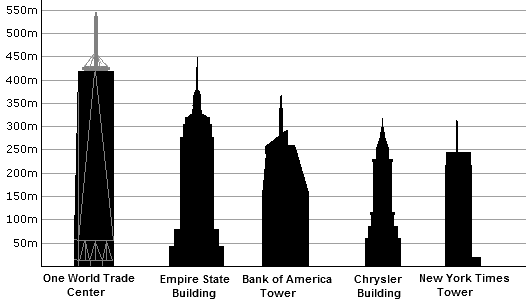

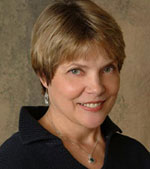


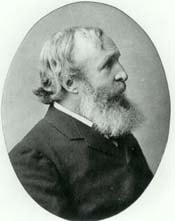

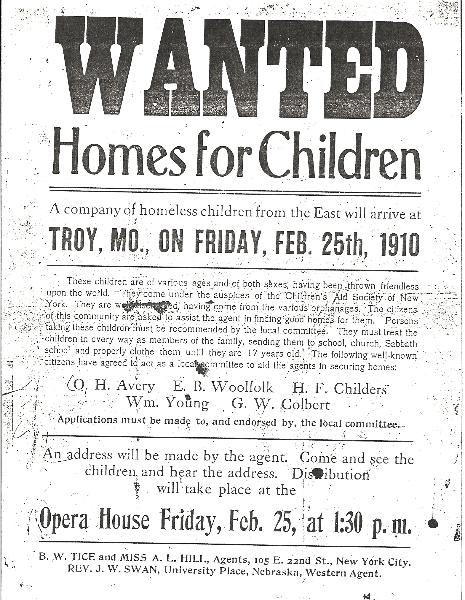



 RSS Feed
RSS Feed
